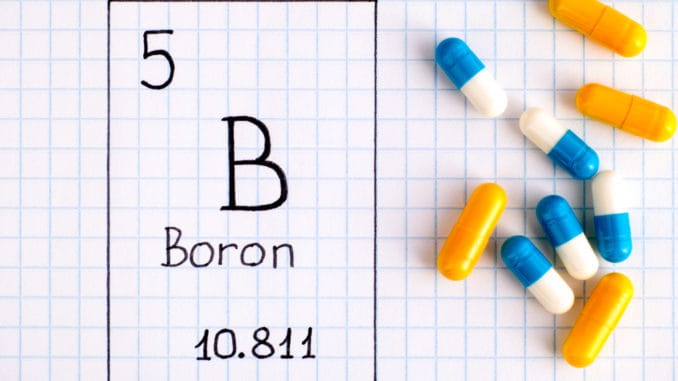
[cmamad id=”21931″ align=”center” tabid=”display-desktop” mobid=”display-desktop” stg=””]
Brand-new findings prove Big Pharma wrong – did they cover this up on purpose?
—-Important Message about Big Pharma Cover-Ups—-
You Can Blame Big Pharma for Covering Up this Cancer Cure
Will they stop at nothing to make money? Big Pharma’s billion-dollar profits are seemingly not enough…
Because they’ve been covering up this natural cancer cure for years now.
Why?
Because they can’t make money off it. And Big Pharma only cares about profits, not cures.
But I’m not letting them get away with it…
———-
New Research: They Were Completely Wrong About Boron
The relationship between boron and arthritis has become fairly well known.
For instance: Most supplements containing boron are now marketed explicitly for “joint health” and also contain N-acetylglucosamine, a component of synovial hyaluronic acid.
Yet if you keep reading you’ll know why N-acetylglucosamine is no bueno for 60% of arthritis cases, making those supplement types not ideal.
And there is also no shortage of online articles with quotations from Dr. Rex Newnham, the Australian doctor known best for popularizing the boron-arthritis link in the 1960s.
Most of his evidence is epidemiological and clinical – yet it does check out.
For example, the Israelis have high boron intakes and low prevalence of arthritis, approaching 0.7%.
“Serum boron levels were significantly lower in patients with knee osteoarthritis, and negatively correlated with the duration and severity of the disease.”
Yet the Israelis also have the highest omega-6 to omega-3 fatty acid ratio – at 26∶1 – with an incidence of cardiovascular disease to match…
People deluded by quaint ideas about dietary saturated fat call this the “Israeli Paradox.”
And you can find many stories about “healing spas” with high boron contents…
But there is enough actual hard evidence that we can ignore such dubious data.
The link between boron and arthritis certainly doesn’t require faith to believe…
And you don’t have to join a cult to take it.
[cmamad id=”21932″ align=”center” tabid=”display-desktop” mobid=”display-desktop” stg=””]
There are clear scientific correlations between arthritis severity and plasma boron levels and synovial boron levels…
(Synovial membranes are joint membranes.)
And the underlying mechanism of action is rather straightforward.
For over a century, we’ve had unambiguous published evidence that boron is both a joint lubricant and an antifungal agent.
It could be worth noting that many cases of arthritis are indeed caused by fungi:
Aspergillus fumigatus, Aspergillus flavus, Coccidioides immitis, Blastomyces dermatitidis, Histoplasma capsulatum, Sporothrix schenckii, Cryptococcus neoformans, Candida albicans, Candida tropicalis, Candida parapsilosis, Candida krusei, and Candida zeylanoides have all been isolated from synovial fluid.
This is most likely because synovial hyaluronic acid contains 50% N-acetylglucosamine, a powerful growth factor that fungi need to synthesize cell wall chitin.
For this reason, you could say that fungi have a natural proclivity for the joints, and that supplemental N-acetylglucosamine is probably best avoided.
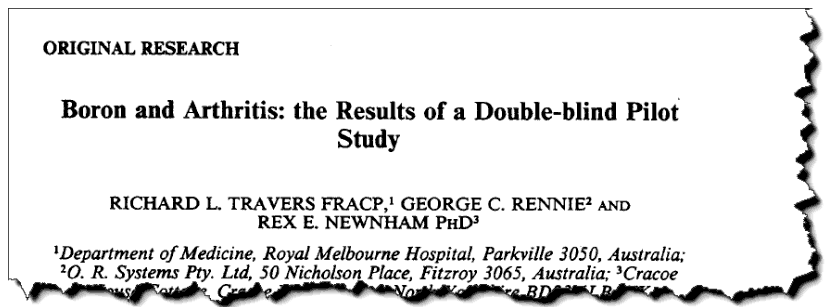
In this study, they gave patients only 50 mg of borax per day, which amounts to 32.4 mg of borate.
This was certainly a safe dose, well within regular dietary intakes found in certain geographical regions.
“The reported daily intake of boron by adults varies between 0-3 mg and 41 mg, depending on the geography. The content in foods also varies considerably; the highest value being reported for honey.”
Its acute toxicity is actually less than table salt, and all claims of toxicity are greatly exaggerated.
In fact, borates were the most common food preservative between 1870 to the years following WWII – more common that even sodium chloride.
The English actually passed a law in 1907 stating that borax and boric acid were the only permissible additives to butter.
But the ambiguous conclusion of merely one study turned the tide against borate…
And perhaps intense lobbying from the salt industry and the AMA helped.
After all, the incomes of medical doctors, especially rheumatologists, are best maintained through borate fearmongering…
It is simply too cheap and effective to let this cat out of the bag.
“There was a significantly greater improvement in the condition of all joints on boron than on placebo and there was also significantly less pain on passive movement on boron.”
And for these reasons there are only a few clinical trials on arthritis and borate – there is simply no money to be made in funding them.
Yet the associations are clear…
Rheumatoid arthritis appears to be a fungal disease, borates are antifungal, borates are inherent lubricants, and people with osteoarthritis invariably have borate levels lower than the mean.
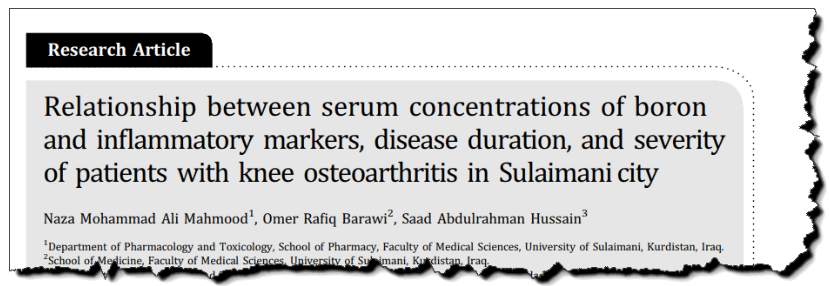
This was a very simple study involving only 43 arthritic cases, 18 control subjects, a syringe, and a Perkin Elmer ICP atomic absorption spectrophotometer.
They found that serum boron levels were about fivefold reduced in arthritic cases and that it was also highly correlated with disease severity.
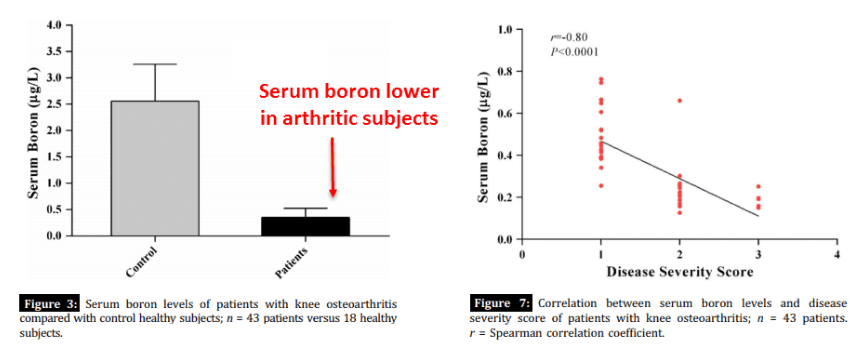
With such a strong correlation, you could consider this a rather consistent finding.
It also appears to be a consistent finding in all studies that have bothered to check.
“Havercroft and Ward reported that boron concentrations in bone and synovial fluid were lower in rheumatoid arthritis patients than in healthy controls.”
Besides this one, studies published by Havercroft in 1991 and Al-Rawi in 2013 report the same:

This study was done on rheumatoid arthritis subjects, not osteoarthritis subjects.
They used a larger sample size of 107 patients with 214 controls.
They also found a substantial difference in serum boron levels between the two groups:
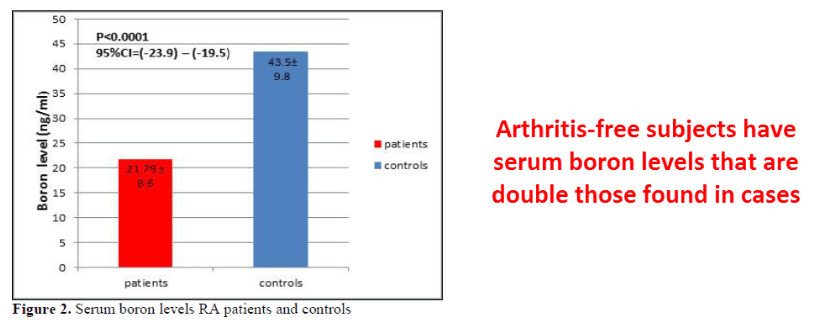
And, as noted by essentially anyone who’s ever looked, boron levels were significantly associated with arthritis, more so than even “rheumatoid factor.”
“In areas where daily boron intakes were typically 1 mg, the estimated incidence of arthritis ranged from 20% to 70%. In areas where daily boron intakes ranged from 3 to 10 mg, the estimated incidence of arthritis ranged from 0% to 10%.”
A person could just stop there and take boron, yet it helps to know exactly why this works.
While it’s true that borates have idiosyncratic lubricating properties, many things point towards its antifungal properties being even more important.
Fungal arthritis is a well-established condition, though only diagnosed as such in extreme cases.
Rheumatoid arthritis, on the other hand, is characterized by a high autoimmune response towards the joint.
Although rheumatoid arthritis is officially an “autoimmune condition” and “not fungi-related,” there are many reasons to strongly suspect it.
For instance, borax has been known to increase pain before it eliminates it completely in most cases…
This suggests an initial increase in immunogenic activity as fungi are destroyed.
“Those who have rheumatoid arthritis generally experience an early aggravation when there is more pain. This is called an Herxheimer reaction and is a good thing as it shows the remedy is working, but they must persevere and in another 2 or 3 weeks all the pain and swelling and stiffness has gone.”
If borates were merely acting to “reduce inflammation,” “inhibit enzymes,” and “lubricate the joints” – the usual explanation…
You would never expect a three-week increase in pain before the indefinite improvement.
Rheumatoid arthritis is also characterized by strong correlations to YKL-40, a chitin-binding lectin released by neutrophils and macrophages.
This protein is very similar to chitinase, also found, and proteins of this type do have antifungal properties.
Chitin-binding proteins work synergistically with chitinase enzymes to break down yeast cell walls, rigid structures with high chitin contents.
We humans do not produce chitin.
So the presence of chitotriosidase (mammalian chitinase) and its YKL-40 cousin can only rightly be thought of as a defense against fungi.
Only yeast, fungi, insects, and shellfish produce chitin.
Bacteria don’t produce chitin – they actually have fluid lipid membranes just like us.
“Similarly, serum boron levels showed very high negative and significant correlation…with the disease severity score in patients with knee osteoarthritis.”
—-Important Message—-
This Is the Most Important Secret I’ve Discovered So Far
I’ve been a health researcher for over 20 years, but when it comes to having a fantastic, erotically-charged sex life…
…this is the most important secret I’ve discovered so far…
(You will LOVE this…and so will she…)

———-

- Travers, R. L. "Boron and Arthritis: The Results of a Double-blind Pilot Study." Journal of Nutritional Medicine
(1990)
https://www.tandfonline.com/doi/abs/10.3109/13590849009003147 - Mahmood, N. "Relationship between serum concentrations of boron and inflammatory markers, disease duration, and severity of patients with knee osteoarthritis in Sulaimani city." National Journal of Physiology, Pharmacy and Pharmacology (2016)
https://pdfs.semanticscholar.org/cb19/6f23850febac8202b09ef2e454aff38f9a1c.pdf - Al-Rawi, Z. "Serum boron concentration in rheumatoid arthritis: correlation with disease activity, functional class, and rheumatoid factor." Journal of Experimental & Integrative Medicine (2013)
https://www.researchgate.net/publication/235325245_Serum_boron_concentration_in_rheumatoid_arthritis_correlation_with_disease_activity_functional_class_and_rheumatoid_factor - Newnham, E. R. "Supplement to the art of getting well boron and arthritis." Wyburn-Mason and Jack M. Blount Foundation for Eradication of Rheumatoid Disease (1994).
http://arthritistrust.org/wp-content/uploads/2013/03/Boron-and-Arthritis.pdf - Nielsen, F. H. "The saga of boron in food: from a banished food preservative to a beneficial nutrient for humans." Current topics in plant biochemistry and physiology (1991)
https://naldc.nal.usda.gov/download/48081/PDF
- Boron: MedlinePlus Supplements
https://medlineplus.gov/druginfo/natural/894.html - Boron
https://mysite.du.edu/~jcalvert/phys/boron.htm
